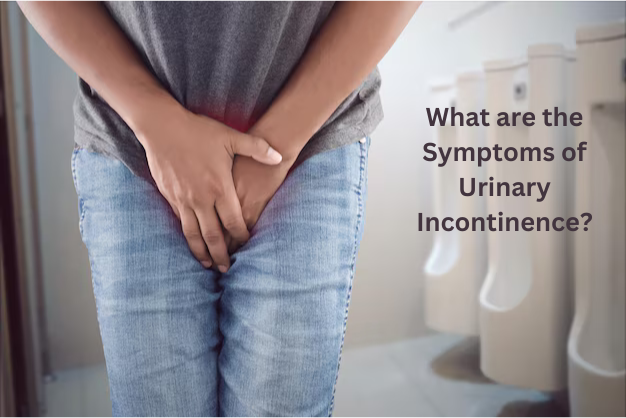What are the Symptoms of Urinary Incontinence?
Are you experiencing urine leakage without any prior warning? Do you find it challenging to control urine when you cough or sneeze? If so, you might be dealing with urinary incontinence.
Urinary incontinence is a common condition that affects both men and women, but it is more prevalent in women, especially after childbirth. Let’s explore the various aspects of urinary incontinence in women and how you can regain control.
What is Urinary Incontinence?
Urinary incontinence refers to the loss of bladder control. It can affect women of all age groups, and its severity can range from occasional urine leaks during a cough or sneeze to a strong urge to urinate frequently. Understanding the type and cause of incontinence is key to finding the right treatment.
Types of Urinary Incontinence
There are four primary types of urinary incontinence:
Urge Incontinence: This occurs when you feel a sudden, intense need to urinate, often unable to hold your urine until you reach the restroom. Women with this condition visit the toilet frequently and may even experience leaks before they can get there. It can also be linked to other health issues.
Stress Incontinence: This type happens when physical movements or activities, such as sneezing, coughing, or lifting heavy objects, put pressure on the bladder, causing it to leak.
Functional Incontinence: Physical or mental conditions can interfere with your ability to reach the restroom in time. This is often seen in elderly women or those with mobility challenges.
Overflow Incontinence: This occurs when the bladder is too full and cannot hold the excess urine, leading to leaks.
In many cases, women experience mixed incontinence, a combination of stress and urge incontinence. These women might leak urine when they sneeze or cough, and also feel an urgent need to urinate frequently.
Causes of Urinary Incontinence
The causes of urinary incontinence can vary based on the type of incontinence. Some common causes include:
- Aging
- Stroke
- Surgical procedures (e.g., prostate surgery, C-section, bladder or pelvic floor surgeries)
- Enlarged or inflamed prostate gland
- Bladder nerve damage
- Pelvic organ prolapse, causing pressure on the urethra
- Health conditions like diabetes, Parkinson’s disease, arthritis, or multiple sclerosis
- Weak pelvic floor muscles
- Overactive bladder muscles
- Pregnancy and childbirth
- Chronic constipation
- Urinary tract infections (UTIs)
- Congenital defects
- Urinary stones or bladder tumors
- Spinal cord injuries
Common Symptoms of Urinary Incontinence
Key symptoms to watch for include:
- A frequent urge to urinate
- Urine leaks when sneezing, coughing, or laughing
- Difficulty controlling the urge to urinate until reaching the toilet
- Persistent urine leakage after surgery
- Involuntary urine leakage without realizing it
- Feeling like the bladder isn’t fully emptied after urinating
Diagnosis of Urinary Incontinence
Your doctor may use the following methods to diagnose urinary incontinence:
- A physical exam to assess the vagina and pelvic floor muscles (for women) or the rectum (for men) to detect prostate gland issues.
- Urine tests to check for UTIs.
- Blood tests to evaluate kidney function.
- Ultrasound imaging to identify pelvic abnormalities.
- Stress tests, where the doctor asks you to apply pressure to check for urine leakage.
- Keeping a bladder diary to track toilet visits, urine leakage incidents, fluid intake, and frequency.
- Urodynamic tests to measure bladder function and pressure.
- X-rays of the bladder.
- Postvoid residual measurement to assess the amount of urine left after urination.
- Cystoscopy to examine the urinary tract for abnormalities.
Treatment Options for Urinary Incontinence
The treatment for urinary incontinence depends on the type, severity, and the patient’s age. Here are the available options:
- Bladder Training: Strengthening pelvic floor muscles and improving bladder control.
- Medications: Both oral and topical medications may be prescribed.
- Medical Devices: These include urethral inserts, pessaries, or sacral nerve stimulators to support bladder function.
- Botox Injections: Used to control an overactive bladder.
- Bulking Agents: Injected into tissues around the urethra to help keep it closed.
- Surgical Procedures: Options include sling procedures, colposuspension, or the insertion of an artificial urinary sphincter.
- Pelvic Organ Prolapse Surgery: If a prolapsed pelvic organ is causing the incontinence, surgical repair may be necessary.
- Catheters: For those with total incontinence, catheters can be used to collect urine in a bag.
- Adult Diapers: For simpler management, adult diapers can be used to prevent leaks.
Conclusion
While urinary incontinence can be embarrassing to talk about, seeking treatment is important to maintain your quality of life and prevent further complications. With proper medical care, most cases can be managed or resolved effectively.
At New World Fertility Centre, we offer specialized care and treatment options for women dealing with urinary incontinence, helping you regain control and improve your well-being.
Frequently Asked Question(FAQ)
1. What is urinary incontinence?
Urinary incontinence is the loss of bladder control, leading to involuntary leakage of urine. It can range from occasional leaks when you sneeze or cough to a sudden, strong urge to urinate that you cannot control.
2. What are the types of urinary incontinence?
There are four main types:
- Urge Incontinence: Sudden and intense need to urinate.
- Stress Incontinence: Leakage occurs due to pressure on the bladder, such as when sneezing or coughing.
- Functional Incontinence: Physical or mental conditions prevent you from reaching the toilet in time.
- Overflow Incontinence: The bladder does not empty fully, causing overflow leakage.
3. Who is at risk of urinary incontinence?
Both men and women can be affected, but it’s more common in women, especially after childbirth. Risk factors include aging, surgery, pregnancy, childbirth, chronic constipation, obesity, and certain health conditions like diabetes or multiple sclerosis.
4. What causes urinary incontinence in women?
Common causes include:
- Weakened pelvic floor muscles due to pregnancy and childbirth.
- Hormonal changes during menopause.
- Damage to bladder nerves from injury or surgery.
- Chronic conditions like diabetes or multiple sclerosis.
5. What are the symptoms of urinary incontinence?
Symptoms include:
- Leaking urine during physical activities like coughing or sneezing.
- Urinating frequently or feeling an urgent need to urinate.
- Inability to control urine until reaching the toilet.
- Feeling like the bladder is never fully emptied.

 Dec-01-2025
Dec-01-2025